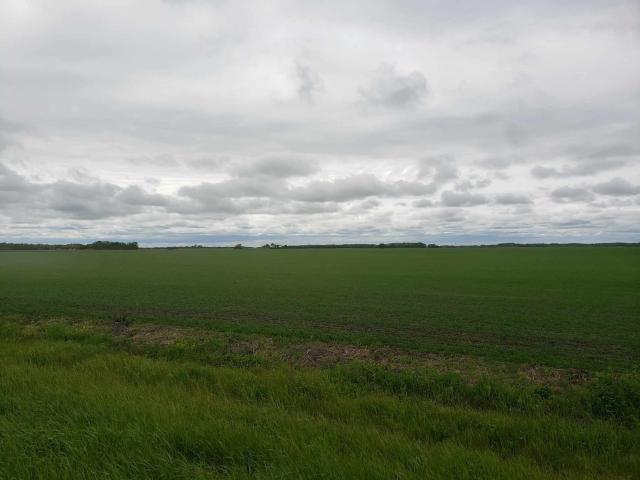This week in Agro-Manitoba, we saw some serious weather extremes.
Severe storms ripped across the province, bringing isolated heavy rains, hail, high winds, and tornados to some areas, damaging the crops currently in the field.
The northwest region saw the most moisture from this, with Fork River getting just under 55mm of rain, and wind conditions topping out at 101 km/h.
Continuing the trend for the year, all areas of the province have exceeded 100% of their normal rainfall, with many over 150%.
Unfortunately, the temperatures have not kept pace with this, as the province as a whole is generally below the 5-year average for growing degree days.
Seeding across the province is currently at 97% complete, the last 3% being waylaid by the excess moisture in the fields.
Spring cereals, peas, and grain corn are approximately 98% complete. Canola and soybean planting advanced, with 96% of canola and 97% of soybean acres planted.
Fall rye and winter crops are coming along, with fall rye ranging from full-head emergence to the beginnings of seed fill, and winter wheat is between the boot stage and full-head emergence.
Spring cereals are almost entirely planted, and range from 3 to 5 leaf stage and tillering to flag leaf. Grain corn planting is complete with stages ranging from V2 to V6.
Oil seeds are seeing some trouble, with 4% of planting to go, and flea beetles being a prominent issue. the earliest planted canola is bolting though, but some need reseeding due to various complications.
Sunflowers are at the V3 to V4 growth stage, and the most advanced flax is in growth stage 4, the start of leaf spiral.
The only remaining Pulse and bean crop to plant is 3% of soybeans. Dry beans have hit the trifoliate stage, and field peas are mostly in the 6-8 node stage.
When it comes to forage and livestock, hay and pasture fields are flourishing, but still would benefit from a streak of warm weather.
Silaging has begun for dairy producers, with some farms wrapping up first cut harvest of alfalfa fields.
As well, most cattle are loving the strong pasture growth, and bulls have been sent out for the breeding season,
Taking a closer look at the Northwest Region, A couple of days with warmer, dry weather allowed for some seeding and spraying operations to take place.
That being said, some areas got a chill overnight, before the toasty Saturday and intensely windy Sunday. That wind damaged some crops, reaching 90-100 km an hour.
Seeding was able to take place in areas that dried up enough; however, there are still patches of fields that are too wet for seeding.
Accumulated precipitation for the week has kept some areas saturated. There is evidence of moisture stress in some crops that are in standing water.
Canola seeding is approximately 85 to 90% complete in our area, and stages of canola are varied due to the challenges of seeding this spring.
The most advanced canola is at rosette stage, while some canola is just emerging.
Flea beetle activity has increased, and multiple applications of insecticide have been required in some cases. Some fields have needed to be reseeded due to flea beetle damage. Sunday’s intense wind was damaging to canola crops which may require reseeding.
Soybean crops continue to emerge and the most advanced soybeans are at the unifoliate stage, though Some wind damage to soybean crops has been reported.
Winter wheat and fall rye crops are advancing and headed out. Spring wheat seeding continued as possible, with approximately 95% seeded. Most of the spring wheat is tillering.
Producers eagerly wait to get the last seed in the soil and await warmer weather, but only time will tell what nature brings our way.
As always, CKDM wishes all producers a safe, speedy, and productive season







